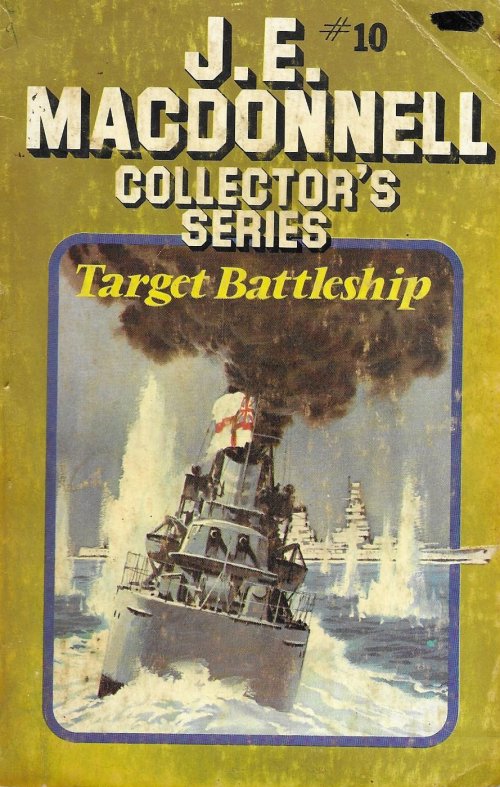J. E. MacDonnell, The Captain, 1960
United Kingdom
HMS Warwick
County Class Cruiser
Details as per the real ships
Note: Explicitly identified as a County Class Cruiser by the author. The same ship appears in the authors later novel 'Blind Into Doom' (1972). This is confirmed by the author using the same name for the ships captain in both novels. The name clashes with that of a V & W Class Destroyer in service between 1917 and 1944. The name does not fit the County Class as it is the name of a town, the correct name would have been HMS Warwickshire.
HMS Dart
'Destroyer', class not specified
No other details provided
Unnamed
2 x King George V Class Battleships
Details as per the real ships.
Unnamed
3 x Destroyers of an unspecified class.
Germany
Unnamed
Bismark Class Battleship
Details as per the real ships.
Note: Class assignment based on details provided. Author simply refers to her as 'German Battleship' throughout the novel without giving her name, even in contexts where it would have been known to the characters in question.
Plot summary: The plan was simple, but events have ways of making even the simplest plans dangerous...
Notes: J. E. MacDonnell was a prolific Australian writer of action fiction for newsstand paperbacks. Some of the novels by him covered in this thread include, 'Gimme the boats!' (1953), 'The Frogman' (1958), 'Night Encounter' (1958), 'Dive,Dive,Dive!' (1959), 'The Gunner' (1959), 'The Surgeon' (1959), 'The Secret Weapon' (1959), 'Subsmash' (1960), 'Convoy' (1960), 'Escort Ship' (1960), 'Find and Destroy' (1960), 'The Coxswain' (1960), 'The Recommend', (1960) 'The Blind Eye' (1961), 'The Ordeal' (1961), 'The Rocky' (1961), 'Away Borders!' (1962, 'Sainsbury VC' (1962), 'U-Boat' (1962), 'Not Under Command' (1963), 'Collision Course' (1964), 'Killer Group' (1964), 'Close And Investigate' (1965), 'Under Sealed Orders' (1965), 'Hell Ship' (1966), 'Point of Departure' (1966), 'The Snake Boats' (1967), 'Approved to Scrap' (1968), 'Full Fathom Five' (1968), 'Judas Rat' (1968), 'The Hammer of God' (1968), 'Mission Hopeless' (1968), 'Petty Officer Brady' (1968), 'Hunter-Killer' (1968), 'To The Death' (1969), 'The Last Stand' (1970), 'Blind Into Doom' (1972), 'The Kill', (1974), 'Standoff' (1977) 'Breaking Point' (1979), 'Command Decision' (1985), 'Jim Brady, Able Seaman' (1985) & 'The Glory Hunter' (c. 1980s) . He also wrote a series of 'James Bond' style superspy thrillers featuring an agent named Mark Hood, novels in this series that have appeared in the thread are 'Come Die With Me' (1965), 'Carribean Striker' (1967) and 'Operation Octopus' (1968).
In earlier posts in this thread I'd identified 'Blind Into Doom' (1972) as a late 'one-off' novel based on the authors note in which he referred to the novel as being a tribute to a recently deceased friend. My reading of 'The Captain' (1960) changes that view however. It's clear that the earlier novel was written as a 'one-off' but with the death of the friend he'd based HMS Warwick's captain off of the author chose to revive the character and ship for a second novel. There's no clue as to when this novel is set during WWII, whereas the later novel can be localised to 1942 around the time of the infamous PQ-17 convoy. Nor is there any mention of 'The Captain's events in the later novel, this suggests that the events of 'The Captain' are taking place after those of 'Blind Into Doom'.
The attached covers are as follows. The first is it's 1971 reprinting as part of the 'J. E. MacDonnell Classic' series, known to collectors as the 'Silver Cover' series. The second is the 2024 eBook reprinting by Piccadilly Publishing, in what is known to collectors as the 'Blue Cover' series.







